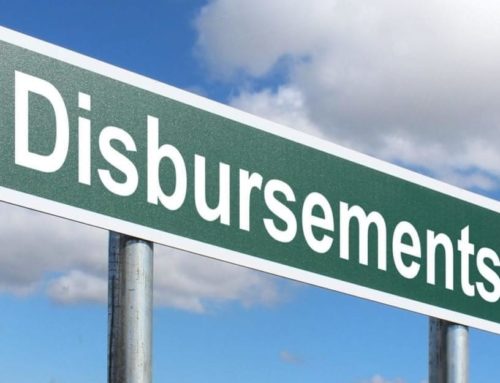One of the hardest parts of owning a business is not knowing how much you will earn in the future.
There is no promise of a steady paycheck, no added holiday or sick pay, and you have to balance both your business and household budget with no real certainty over your income. Worse still, even if you manage to predict your income accurately, you still don’t know how much of it you can spend and how much you need to pay the taxman.
If you don’t have any idea of how much tax you’re likely to owe, it can be easy to just put off thinking about it and hope that your tax bill will magically equal the exact amount of money in your bank account.
The unfortunate news is, no-one can predict the future (or next year’s tax bill), and it’s impossible for your accountant to tell you in advance what that EXACT figure will be.
The good news is – you can work off a pretty close estimate. Having a figure in mind gives you something to aim for, and that’s something an Accountant is best positioned to help you figure out.
We’ve put together the following guide so you are not completely in the dark about your future tax bills. This guide is aimed at directors/shareholders of their own limited company.
Please note this is a very simplistic method that can be followed if you want to make sure you have enough money saved for the tax man. We’ve purposely overestimated the tax a little to allow a contingency for unexpected adjustments. That way, if the tax is less you get a nice bonus at the end, better than a nasty surprise when you don’t have enough.
Follow these steps any time you want to know what your tax bill might be
1. Calculate your estimated profit
You will be taxed on profit, not sales, so the first thing to do is estimate your profit. If you have Xero, run your Profit and Loss report and have a look at the bottom line.
If you don’t have accounting software you can follow this simple formula.
- Add up the total amount received from customers, then take off the VAT (20%). This is your turnover or revenue.
- Then, take off how much it costs you to run your business each month, that leaves you with your profit.
If you don’t know those numbers, you could simply take the balance in your account at the start of the month and the difference at the end – any increase is profit. But be careful with this as any money you’ve drawn out should be added to profit.
Sales X The income you receive from your customer.
Less VAT (X) If you are VAT registered you need to take this off first.
Net Sales X
Less costs (X) Add up all of your business expenses
Profit X
2. Calculate your estimated corporation tax
Your limited company will pay corporation tax at 19%. This will be due 9 months after your company year-end.
So let’s round this to 20% and you’ll have a small contingency built into your tax account. Put 20% of your money left over into a separate business account every month and you’ll have enough to pay your corporation tax.
This is especially important when your business is growing and profits are increasing as your corporation tax bill could be much bigger than it was last year!
3. Calculate your estimated personal tax
Ok, this is where it gets a bit tricky. Let’s assume your accountant is doing some tax planning for you, has set you up with a tax-free salary and you are taking the rest as dividends.
For 2021/22 you have a personal allowance of £12,570 and a dividend allowance of £2,000, so that’s £14,570 tax free cash you can draw from your company.
It’s probably easier to look at this as a monthly figure so that would be £1,214 per month tax free.
Over that amount and you will pay tax on your dividends at 7.5%, 32.5% and 38.1%.
We’ve put a selection of drawing levels into the table below so you can see at a glance the tax you might pay at a certain dividend level.
| Total drawings per month | Estimated monthly tax bill 2021/22 | Estimated annual tax bill 2021/22 |
£2,000 | £60 | £720 |
£3,000 | £135 | £1,620 |
£4,000 | £210 | £2,520 |
£5,000 | £490 | £5,880 |
£6,000 | £812 | £9,744 |
| £7,500 | £1,300 | £15,600 |
This gives you an idea of how much money to save each month towards your personal tax bill so that when it comes through you’ll have a figure that’s somewhere in the region of your actual bill.
Please note, this personal tax is due from your own money so you have to take this out of your drawings.
The aim here is to save something towards your tax bill not 100% accurately predict the future.
Look back over your income so far this tax year and see how the prediction of tax differs to the amount of money you have saved in preparation.
If you haven’t got enough, don’t stick your head back in the sand and go back to blissful ignorance. Knowing where you need to be is the first step towards getting there. By keeping the figure in mind, you are more likely to end up with the right amount on the day Mr Taxman needs paying.
If you don’t want to DIY and be responsible for making all these calculations, we have a far easier system we call ‘Your Ideal System’. Once you’re all set up, this will give you the key numbers at the touch of a button.
Don’t forget: Get your tax return done nice and early so you get the actual figure earlier
By getting your bookkeeping and any other information your Accountant needs for your tax return together as quickly as possible, you can get your actual tax payable figure with plenty of time to spare.
Whether you become a whiz at the estimations early or not, getting your tax return done in good time will allow you to get a bit more cash together or think of something to spend the excess savings on. Far better than an estimate, right?
Disclaimer: This advice is relevant for the tax year 2021/22
This advice is relevant for the tax year 2021/22 and assumes you are the director of a limited company, taking the profits as an individual without any other significant sources of income. The tax amounts are dependent on your personal circumstances and the guide here is only a rounded estimation. Your Accountant will need to gather all of your personal income together to calculate your actual tax bill.






